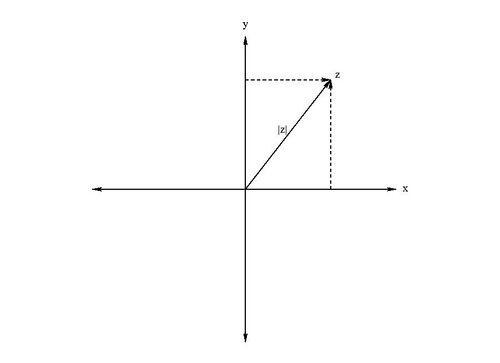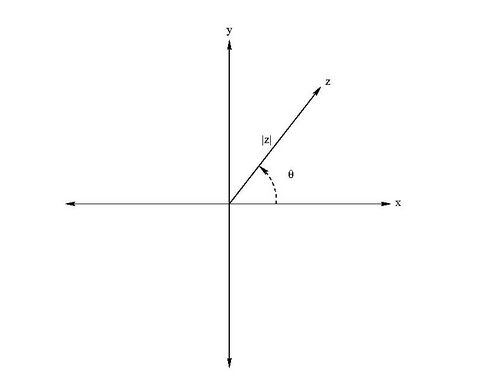Complex numbers arise naturally from an attempt to solve the equation

It's easy enough to write such an equation down, but how would you
solve it? The answer is

We let the symbol  represent
represent  , so that
, so that  . Then
any number of the form
. Then
any number of the form
|
|
|
 |
(B.1)
|
where  and
and  are real is called a complex number.
Let's take some other complex number to be
are real is called a complex number.
Let's take some other complex number to be  where
where  and
and  are real. Then the two complex numbers are equal,
are real. Then the two complex numbers are equal,

This means that

is true if and only if

We refer to  as the real part of the complex number
as the real part of the complex number  and
and
 as the imaginary part. Sometimes these are written as Re(
as the imaginary part. Sometimes these are written as Re( )
and Im(
)
and Im( ) respectively.
) respectively.
We may restate the equivalence condition as  if and only if
the real part of
if and only if
the real part of  is equal to the real part of
is equal to the real part of
 and the imaginary part of
and the imaginary part of  is equal to the imaginary part of
is equal to the imaginary part of  .
.
To add two complex numbers, add the real parts and the imaginary parts separately:

Complex numbers are multiplied like any other binomial expression (recall foil: first two, outside two, inside two, last two):

where we have used  .
.
The complex conjugate of the complex
number  is denoted
is denoted  and is given by
and is given by
|
|
|
 |
(B.2)
|
One reason for defining this is that a number times its own complex
conjugate is real,

Taking the complex conjugate of the number means just changing the sign in front of the  .
The complex conjugate of the complex conjugate is the original complex number, and
.
The complex conjugate of the complex conjugate is the original complex number, and

We also call this the modulus squared . The modulus is
|
|
|
 |
(B.3)
|
Note that the complex conjugate of a product is the product of the complex
conjugates:

It is often useful to look at a graph for a complex number, consisting of an x-axis for the real part and a y-axis for the complex part. This is shown in Fig. B.1. In this
way, we can think of  as a two-dimensional vector with the magnitude (length) being equivalent to the modulus of the complex number,
as a two-dimensional vector with the magnitude (length) being equivalent to the modulus of the complex number,  .
.

Figure B.1: A complex number in Cartesian coordinates.
Another useful way to represent this is with polar coordinates. We
can do this by writing

Clearly if we wanted to rewrite this in terms of  and
and  , we find that
, we find that  and
and  .
.
A very famous identity exists between the exponential function and sine and cosine,
|
|
|
 |
(B.4)
|
where  is the exponential function, which is a number that is approximately 2.71828.
Using this equation, we could also write
is the exponential function, which is a number that is approximately 2.71828.
Using this equation, we could also write

This is really just a short-hand notation for us and most of the time, when we calculate something, we will use the  functions. But is often the case that people will write this as
functions. But is often the case that people will write this as
|
|
|
 |
(B.5)
|
where  as is usual for polar coordinates. So
everything is just like polar coordinates with the exception of the
inclusion of the factor
as is usual for polar coordinates. So
everything is just like polar coordinates with the exception of the
inclusion of the factor  . (See Fig. B.2.)
. (See Fig. B.2.)

Figure B.2: A polar coordinate representation of a complex number.
Exercises
Let  and
and  . For 2-6, write the answer in terms of the real and complex components, i.e., in the form
. For 2-6, write the answer in terms of the real and complex components, i.e., in the form  , where
, where  and
and  are real numbers.
are real numbers.
- Find
 using the quadratic equation:
using the quadratic equation: 
- What is
 ?
?
- What is
 ?
?
- Calculate

- What is
 ?
?
- Find
 .
.
- Find
 .
.
- Write
 as Equation (B.5) using Equation (B.4).
as Equation (B.5) using Equation (B.4).
Further Problems:
- Show that

- Show that



















































